It’s common sense that good investments are properties that are priced below market value. But how do we determine if a property is indeed below market value? It’s quite simple really, but first, we have to define market value.
Market Value definition
According to Wikipedia, International Valuation Standards define market value as
“The estimated amount for which a property should exchange on the date of valuation between a willing buyer and a willing seller in an arm’s-length transaction after proper marketing wherein the parties had each acted knowledgeably, prudently, and without compulsion.”
In other words, a buyer and a seller who have no compelling reason or special circumstances to buy and sell, respectively, agree on this price.
Market value is not the same as the technical term “fair market value” (FMV) which is used for taxation purposes, and is based on the zonal value of a property.
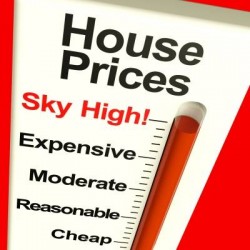
Why do we need to know the market value of a property?
As Robert Kiyosaki said in his book Rich Dad Poor Dad,
“You should make money when you buy, not when you sell”
I have touched on this subject in my post about the Top 5 Things To Consider When Buying Foreclosures, where I said that in essence, you make money when you buy a property at a price below market value, because if you sell the property on the same day you bought it, you have a potential gross profit equal to the difference between your purchase price and the market value.
There is thus no need to wait for the property to appreciate before you will earn any money.
The key therefore is to know how to make a fairly accurate estimate of a property’s market value, so that you can evaluate if you can really make money from that property.
Property valuation principles
Most real estate books out there would say that there are three basic approaches for property valuation, namely:
- Cost approach – establish an estimate of the current total cost to acquire or develop a property, less depreciation;
- Market approach – the price of comparable properties that have very similar specifications at the same area or vicinity are used as the basis for property valuation; and
- Income approach – assumes that the value of a property is equal to the net benefits that the property will generate for its owner over its remaining economic life.
In this article, rather than expound on the valuation principles above, I will focus on the practical applications of the two principles that I actually use which are the cost approach and the market approach.
As a real estate investor who focuses primarily on residential foreclosed properties, I find the cost approach and the market approach as easy to use and most appropriate. I would like to share how I do these below.
Cost Approach
For the cost approach, I try to determine the approximate cost of the land of the property I am evaluating and the estimated cost for the construction of the improvement using the same floor area. Then I deduct the depreciation to get the depreciated value of the property. I do this as follows:
- I determine the average going rate of land in the same vicinity of the property I am evaluating. The nearer, the better. If I can get prices for land on the same street, much better.
- Using the price per square meter of the going rate of land, I multiply this with the lot size. The result is the approximate cost of the lot. For example, if a lot near a foreclosed property in a certain village in Marikina City I’m evaluating costs Php5,000 per sqm, then the approximate cost of the lot of a foreclosed property I’m evaluating that has a size of 150sqm would be about Php750,000 (150sqm x 5,000pesos/sqm)
- To determine the cost of the improvement, I multiply the floor area with the current going rates for construction of improvements per sqm of floor area. Currently, I am using a conservative construction cost of Php15,000 per sqm of floor area. For example, if a house has a floor area of 55sqm, then the cost for the improvement is about Php825,000 (55sqm x 15,000p/sqm)
- I then add the cost of the lot and the improvement to get the total cost. Following our examples above, the total cost shall be Php1,575,000 (Php750,000pesos + Php825,000).
- Next, I compute for the depreciation of the property. Take note that the depreciation I am talking about is not the depreciation used for accounting purposes, but rather depreciation in terms of deterioration, obsolescence, or any factor that may contribute to a deficiency of the property as compared to a brand new property. A good example would be the loss in value caused by a property’s deterioration due to age, wear-and-tear, etc. and the cost to have this fixed to bring it back to a “ready for occupancy” (RFO) or “brand new” or”good as new” condition. Going back to our example, let’s say the property has deteriorated a bit as it is already 7 years old and if repair estimates to make the property good as new and ready for occupancy is Php150,000, then I can use Php150,000 as depreciation.
- I then subtract the depreciation from the total cost of the lot and improvement to get the depreciated cost of the property. Using our example, it will be Php1,575,000 – Php150,000 = Php1,425,000.
Therefore, the estimated current market value of our example property above, using the cost approach, would be Php1,425,000. I can now compare this to the selling price of the foreclosed property.
What if the foreclosed property in our example above was being sold for Php1.6M, would it be a property worth buying?
Not really! First of all, its selling price is above the market value I have determined by Php175,000 (Php1.6 – Php1,425,000).
Secondly, why would I buy a foreclosed property at Php1.6M when I can buy a same sized lot and have a new house constructed for only Php1,575,000?!
Of course there are other things to consider like time to construct, etc., but for me this serves as a good basis for comparison. If you ask me, I would only consider buying a property if the selling price was about 40% below its market value.
By the way, in my opinion, the “After Repair Value”(ARV) should at least be equal to Php1,575,000 or the cost we have arrived at in step 3 above.
Market Approach (using comparables)
For the market approach, I would have to look for houses for sale in the immediate vicinity of the foreclosed property I am evaluating that are “comparable” or very similar in terms of lot area, floor area, number of bedrooms, number of toilets and bath, capacity of garage or parking slots, etc., and get their selling prices.
Of course it may be hard to find properties with exactly the same characteristics so I would have to settle for what is the nearest comparable property. Take note that the advertised selling prices are just the sellers’ asking price or “wish price” and may not necessarily reflect an accurate picture of the property’s market value.
If I can find a comparable property that has just been recently sold, then that would be an even more accurate estimate of the current market value. But where do I look for these comparable properties? I can go around the vicinity, or look for properties online at the following websites: bahay.ph, sulit.com.ph, olx.com, craigslist.com, buyandsellph.com, etc.
As I am not interested on their “wish price”, I would have to call them up and ask a question like “If I were to pay in cash and close the deal in less than 1 month, what would be the lowest price you would be willing to accept?”. Their answer to this question, which is like the seller’s last price, would be the price I can use as a basis for comparison.
Let’s say I was able to get the last prices of 3 comparable properties in the vicinity of the foreclosed property I’m evaluating and their average price is Php1.5M, and again, using the example in the cost approach, the foreclosed property is being sold at Php1.6M. Obviously, the property is not a bargain as it is not being sold below market value.
How about rentals?
Determining current rental rates for a particular area is a lot simpler and pretty straight forward. I often hear stories from other real estate investors that all you have to do is go to the nearest sari-sari (convenience) store, buy a bottle of softdrinks and some snacks, then while consuming these, engage the tindera (seller) with some small talk and ask if there are any houses or apartments for rent in the area.
To get more details and ensure you are getting relevant data, you also need to ask questions such as:
Where are these houses for rent?
How much are the rental rates?
Is it easy to find vacant units in the area?
If a vacant unit is available, how long would it remain vacant?
And so on and so forth…
This approach actually works and is very easy to do, provided you are willing to get out of your comfort zones and go out on the streets.
Use bandit signs
Another tactic which I heard from another real estate investor, which is quite unorthodox in my opinion, would help determine the demand for rental units at the rental rates you have determined above.
This calls for putting up bandit signs in the same area that says “Apartment for rent PhpX,XXX per month” or “House for rent PhpX,XXX per month” that includes your number and then you just have to wait for interested callers or texters.
You can then gauge if there really is a demand for a rental property at the same area at that rental rate.
You would then have to tell the callers that the property will not be ready until after a few weeks depending on certain factors (use your creativity to explain this). You can even say that the property already has a tenant but if they want, you can contact them if a unit becomes available and you ask again at what rental rates are they willing to be your tenant. It’s like doing a market research for rentals.
I have never actually done this yet but I certainly would like to try it someday.
Is there an easier way?
If I’m feeling lazy or if I’m too busy due to work, which is often, is there an easier way to do these? Well, one option that comes to mind would be to just the avail of the services of a reputable and licensed real estate appraiser. The problem here is I really can’t hire an appraiser each time I am looking at a prospect property as the going rate for appraisers is from P3,000-P5,000 per property appraisal and I’m not willing to spend that amount on every property that comes my way.
Another option would be to just rely on my broker. This is where having a broker comes in handy, provided they have already sold a number of properties in the same area or vicinity. They are in a good position to give a fairly accurate estimate of the market values of properties in their areas of specialization. It would also help a lot if your broker also invests in real estate and knows that you are looking for properties that are below market value.
What next?
Using the information gathered from the approaches described above, one can have an objective means of determining if a foreclosed property is being sold below market value. In my case, If do find a foreclosed property that appears to be sold at a price below market value, I still have to determine if I really am going to make enough profit, or if I am going to make any profit at all, after all expenses like repairs, taxes, broker’s commissions, etc. are considered.
I also have to check if the property will make a decent positive cashflow if I do decide to have it rented out, or if I decide to sell it through a rent-to-own scheme. These will have to be discussed in a separate article.
Take note that I learned the above methods partly from my review classes for the November 2007 Real Estate Brokers’ Licensure Exam under Engineer Enrico Cruz of the Urban Institute of Real Estate, and partly from actual experience. I hope this helps those who are new to real estate investing.
How about you, how do you determine the market value of a foreclosed property? Please share it here through the comments section below and lets compare notes. Thanks!
Happy investing!
To our financial freedom!
Jay Castillo
Real Estate Investor
REBL#: 3194
Blog: www.foreclosurephilippines.com
Text by Jay Castillo. Copyright © 2009 All rights reserved.
Image courtesy of Stuart Miles / FreeDigitalPhotos


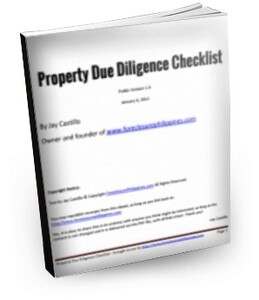
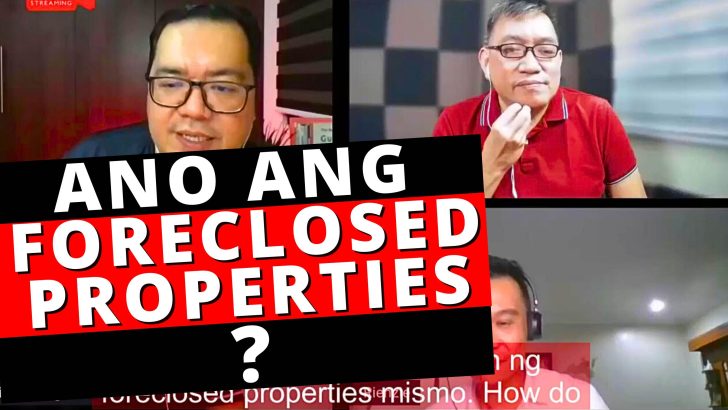
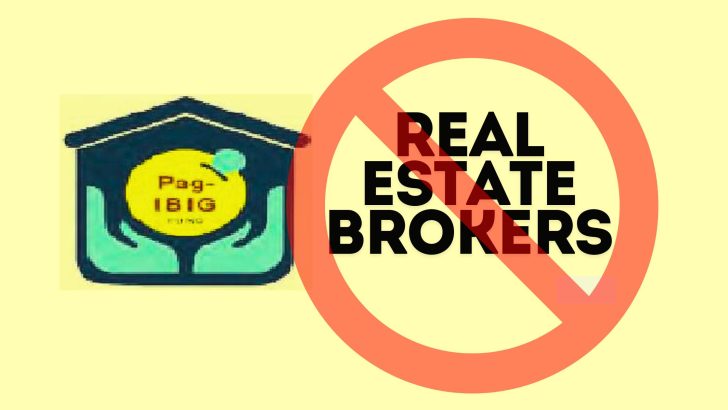
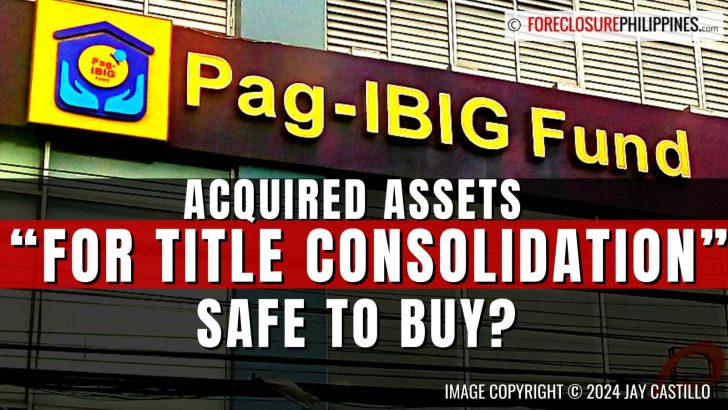
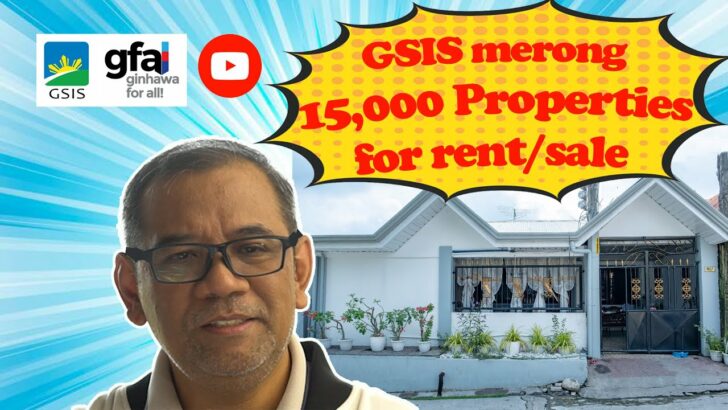
![Why invest in foreclosed properties in the Philippines? + Top things to consider [Video] 6 Why invest in foreclosed properties in the Philippines? + Top things to consider [Video]](https://www.foreclosurephilippines.com/wp-content/uploads/2023/03/video-how-to-invest-in-foreclosed-properties-in-the-philippines-v3-728x410.jpg)

Greetings sir Jay!
This article is really helpful for newbies like me. I just have a question sir. How do you usually determine or get the price per square meter of the area? For your example here, how were you able to determine 5,000 per square meter?
Thank you for taking time to read and Godbless!
Gadz
Hi Gadz, in my example, Php5K/sqm was the average price per square meter of vacant lots for sale in that particular village. I looked for vacant lots and got the asking price, which I divided with the size in square meters.
Thank you for responding to my message sir
Pingback: 5 Mindsets of Real Estate Investors (I was stuck at number 3 before, number 5 is so dumb!)
Pingback: Thinking of Buying Foreclosed Condos? Attend the "Ten-Ten" Auction on October 10, 2014!
Good day po!
Do you have any websites where to find a real estate broker? I’m from Mindanao, SOCCSKSARGEN area, and I don’t know where to find one.
Thank you.
Benjamin
I’m in dire need of help on this! Where exactly can I go if i want to check the details of properties sold in an area? Like public records indicating the exact date of the sale, to whom and most improtantly the selling price. I tried going to the assessor’s office but of course they only provided me w/ other values. Can I check it at the RD or maybe even BIR? Do I have to pay to get that information?
Hopefully my inquiry here can still be read.
Thanks in advance!
The RD should be your best bet as they should have a copy of the Deed of Sale of the past transfers of a property. Good luck and let us know how it goes.
Thanks very much! I’ll do that.
Hi Jay,
Aside from footwork looking for comparative sales in the area of your target property, does the BIR, or any other R/E related government agency provide a database of property sales. It seems this should be matter of public record and accessible accordingly. This would also provide ownership information, it seems, and help protect from negotiating with ‘pretended owners’.
can i ask for the current market value, templates and trivia of this website? thank you very much!
Hi Lee, do you mean the current market value of the domain http://www.foreclosurephilippines.com or the whole website including contents? The template I used is a premium theme from FourBlogger.com and site statistics can be found in our Advertise page. Are these what you want?
good day sir Jay!
like to ask you sir about how someone become a real estate dealer? are there particular guidelines of BIR for that matter? what if i bought in the same year 5 real properties under my name and sold it immediately will the BIR tax me as a dealer or investor?capital gain tax or income tax? what is the holding period before some will be recognize as real estate dealer? my parents bought a foreclosed house and lot last 2007 under a deed of conditional sale contract and monthly equal amortization until october 2012. can we sell this immediately in the same year after the title is transferred without being tax as real estate dealer?
Pingback: What you need to know about BIR Zonal values
Its easy pala to check for the value of Foreclosed Properties by the cost and market aproaches. Does almost all of the foreclosed listings go down 40% below the cost of the property?
Hi sir jay, I think my question is a bit off topic but I’ll ask it anyway.
By the way, I’m a government employee and I’ve been wanting to invest in real estate but my FFA is still too small for me to start. I recently found out that I am entitled to a housing loan from GSIS of up to 2M pesos with an interest rate of 8% per annum, payable in 5 to 30 years. I’m thinking of finding a foreclosed property (improved) to buy which I can put on rent eventually and have it’s rent pay for my monthly dues with GSIS with extra passive income of course. Do you think this is a good idea? Do banks go in to this kind of deals with their properties for auction? Thank you very much in advance sir
Hi sir jay, i am new in the real estate business, currently me and my partner is building a duplex in ibarra st sampaloc mla. maybe you can help us sell the new houses since you are also a licensed broker. We gve the standard 3% com rate to brokers who can close the deal. each house is 50sqm lot area. with 2 floors and an attic, 1 cg. flood free. total flr area is abt 130sqm for only P4.4M. If you have questions pls contact me at 09285078102. thanks!
sir jay,
i would like to enter the bussiness of forclosed properties, but one thing stopping me is the requirements of the bank. coz they ask to much requirements, that a starter like me could not enter the bussiness.
What should i do with this problem?
Thank you for all the blog, it helps me find my foucs in life. Hope u could help me to enter in this kind of bussiness..
More power and regards.
yours,
roel c. navia
Hi Roel, first of all, I congratulate you for deciding to venture into investing in foreclosed properties. My suggestion for you is don’t let your inability to get a loan approved stop you from starting. Continue looking for a niche to focus on, continue looking for good deals, continue managing your finances. if you continue doing these, the following will happen sooner or later, you will find a really good deal, and investors will be willing to finance the deal for you. If you continue to manage your finances, you will eventually be able to raise enough capital to buy your first deal. You can also try other options like going into brokerage, try selling other peoples properties, etc…
Pingback: BIR to fast track the revision of the schedule of zonal values of real properties nationwide
HI!
I hope you can help me enlighten matters regarding Capital Gains Tax, and other taxes incurred when buying a property.
Most sellers let their buyers shoulder those taxes mentioned above. When are these to be paid? Are they to be paid after paying the Down Payment too? If I have to acquire it through a Bank loan or any Lending Institution, if that would be the case, my Equity will be much higher, with required the down payment already, plus taxes mentioned above.
Your blog has been very very helpful….! Thank you very much and keep on enlightening people like me.
More Power!
Pingback: How to turn listings of foreclosed properties into opportunities
Pingback: Why not treat your first home as a real estate investment?
This article contains very valuable insight.
Hi Jay,
I’m jeff and I wanted to know more about real estate. I came across Real Estate when I accidentally read a book (8 Secrets of the Truly Rich) of Bo Sanchez through a friend of mine and the book struck me hard. I’m 23 years old and I’m married with 1 kid. Both of us are working and earning about 43k – 44k Net combined. We are already on the stage of getting ready for investments and we are now getting the hang of saving 5k – 10k a month and it’s strictly implemented. I want to invest in real estate but don’t know how to start since I don’t have yet the amount needed to start buying properties. Is loaning a good idea or not. We are paying our first investment (Our House) through pagibig and we want to start investing as early as now because we’re also aiming to start this game before our daughter goes to school. I hope you can give us some advice. Thanks and God Bless -Jeff and Joy Baclangen.
P.S. Your Blogs are really helpful and informative. But too much advance for a beginner like me.
Pingback: UnionBank repossessed properties for auction on September 12, 2009
Thanks for this information!
Usually banks prepare only a desktop valuation of the properties and I heard this is lower from the real market value most of the time. If you are in my position, will you buy a property valued by the bank at less than the amount they are selling it? Let’s say based on the desktop valuation the value of the property is Php 900K but they are selling it for Php 1.4M.
Let me know your thoughts please. Thanks!
Cheers!
Reggie
Hi Reggie, I guess the question that I would like to answer first is “what is the market value of comparable properties in the area?”. Let’s say comparable properties have been sold recently for 2.5 Million, then I guess the selling price of 1.4M would look promising. The in-house valuation given by banks to the properties they sell really have little bearing as we really don’t know how they arrived at it.
Pingback: Philippine National Bank Properties For Auction on August 20, 2009
I’ve seen this approach before when I viewed appraisal reports done by Sallmann’s and CBRE.
I think that the most commonly used approach among the three is the market approach wherein you compare the value of the property being assessed to previous sold properties within its neighborhood and vicinity.
Yup, so far , the market approach appears to be the easiest to do in my case and also the most accurate.
This is with reply to Bikoy’s comment. I recently attended a Pag-Ibig seminar after reading and reading Mr Jay Castillo’s ever informative blog.As per policy you have to be a member for 2 years or pay off in lump sum and then you can acquire any foreclosed property through their financing as long as the title is clean and under tha bank’s name.That is clearly good news to us specially with Pag-Ibig’s low interest terms. Makes us closer to that dream of providing a home for our family. As for me, Im just looking for that house which fits my category for the loanable amount and will take it from there.Wish me luck.More power Mr Castillo.
hi RG, thanks for your additional insight, and many thanks to mr.Castillo for providing us all this invaluable info through his blog.
all the best!
You’re welcome bikoy!
hi jay and others (“,)
pahabol na question po, pano po kayang diskarte sa property na foreclosed and unfinished construction (may mga walls na, but no roof) and probably mga 1-yr na di pinagpatuloy. naghahanap kasi ng bahay para sa aming 1st-bahay. is the cost to consider is the lot only or with its 50% uncompleted construction? is it advisable to buy that kind of property? or it would be weak after we continue the construction?
thanks in advance, best regards!
-bikoy
hi bikoy, in this case, I believe you will have to consider the cost of the improvement(floor area x 15,000) less the cost to complete the construction(the cost of the construction of the roof, partitions, finishings, painting, etc). This would in effect be the cost of the improvement which you can add to the cost of the lot. Take note however that even if the property looks like a bargain, please do remember that the construction of a roof can be very expensive. I suggest you ask for an estimate from a contractor first.
hi jay, thanks very much for your advise (“,)
also, if ever i’ve been able to get a housing loan with a bank or with pagibig-funds, would the loan amount would go directly to the seller? or with the borrower first (me)?
thanks and more power to you!
cheers!
Hi Bikoy, you’re welcome! Usually the loan goes directly to the seller, that’s how it was done when we purchased our house through a pag-ibig loan.
Hi RG, this is definitely good news! Thanks and I hope to hear from you soon that you and your family already have your own home!
Hi Jay! When are we doing the seminar? I am excited and I want to buy already. 🙂 Wrote about you (and buying) at http://www.youwanttoberich.com/2009/07/14/grow-rich-play-monopoly/
Hope you can visit. 🙂
Issa
Hi Issa! Wow, thanks for the special mention, haha, personally I have never finished a game of monopoly yet! Just like you, my team I also won when we were the first to get out of the rat-race in the cashflow 101 game when I attended the TRP seminar. Next step is to do it in real life, which can really be done!
As for the seminar, will let you know asap, I think it will be a webinar instead of a seminar. 🙂
Thanks again for visiting!
Hi Jay,
This information just saved me P3,000.00 this week. And starting today, i’ll start doing my own appraisal. So, i’ll be able to pocket several thousands more, thanks to you!
Correct me if i’m wrong, but for repair estimates though, i think novice investors should seek the help of a contractor.
Also, would you know the answer to these questions:
1. Does a seller need an SPA (special power of attorney) from her husband, to sell a property. The title is under the seller’s name.
2. What is the protocol in evicting tenants?
Again, thanks for your help. And, I commend you for your generosity.
Hi Karen, wow, nice to know you were able to save that much! Yes, for repair estimates, novices and even veteran investors would need to get them from reputable contractors.
For your question re: SPA, I’ll have to ask around for this.
For evicting tenants, can I get more details surrounding the situation?
Very nice article, very helpful for a newbie like me. Thanks for sharing. I am about to close a deal this month from a motivated seller and this article is just timely.
Hi Adi, glad to help! Let us know how it goes, good luck! Thanks for dropping by!
hi sir,
nice article you have, and it really contain very valuable insights! i do really learned a lot visiting your site.
also, i wonder, how can i compute or estimate construction cost? is there any institution that i could visit and get this info? (just in case years from now and the above 15k example is no longer applicable c”,) )
on foreclosed property– can i use my pag-ibig loan to purchase this kind of real estate? i was looking for a possible purchase using this technique for my own family use, since we’re still renting and would love to have a “roof” of our own…
many thanks and more power!
Hi Bikoy, thank you for visiting and I’m glad you are learning from this blog, I also learn a lot from readers like you so thank you also! With regards to your question if there’s any institution that comes up with construction estimates, I haven’t found any yet that comes up with this. What I do is just get a consensus from contractors I know, you should consider getting yourself acquainted with a few contractors specializing in your area of focus.
With regards to pag-ibig, this is not an immediate option available to you but after a certain period of time(not sure if this is one year), it would be possible to have a loan take out towards pag-ibig where pag-ibig will take over the mortgage from the bank where one has bought the foreclosed property. If you have not attended a seminar at pag-ibig, I highly suggest you do as this is also discussed there.
In the Cost Approach Method, aren’t steps 3 and 5 redundant? Or should they be, at least, combined in a single step?
Before determining the cost of improvement, shouldn’t you first determine its depreciation?
I’m very new at this, kindly pardon my questions.
Great blog you have here, Sir. Congratulations and more power.
Thanks a lot
Hi Jun, thanks for the comment and the kind words. With regards to your questions, in my opinion, it would be better to determine the cost of the improvement prior to determining the repair cost(depreciation) so that you would have an idea if it really has value and if it is worth repairing at all. Besides, it is much easier to determine the cost for the the construction of improvements than cost for repairs as you will have to wait for repair estimates from contractors. Step 4 is necessary before step 5 so that you will get an overall estimate of the value of a brand new property, and if it is not that promising, then maybe there’s no need to go to step 5 and waste your time and that of the contractor(s). 🙂
Thanks for visiting!
Pingback: How I Estimate Market Values Of Foreclosed Properties
Pingback: How I Estimate Market Values Of Foreclosed Properties · Real-Estate-Investing.ExplainedOnline.Net
Pingback: How I Estimate Market Values Of Foreclosed Properties